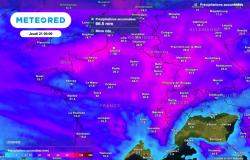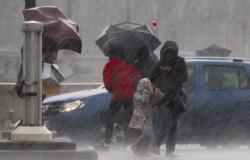
“We have known these foie gras producers through the show for at least fifteen years,” smile Marie-Hélène and Dominique, living in Lorient (56). A base in southern Finistère pushes them, every year, into the aisles of the Wine and Gastronomy Fair in Quimper. Finalizing an order which will obviously be delivered to Brittany before the end-of-year holidays, Joëlle and Daniel Cozyns, producers of foie gras in the south of Sarlat-la-Canéda (24) confirm: “They even came to visit us in our exploitation,” say the Périgourdins.
One of the tricks of the show undoubtedly lies in this gourmet link that its visitors maintain over the years with producers from the regions of France. “There are 140 of them this year,” says Joëlle Graal, organizer of what has become after 25 years a Cornish high mass. “100% of exhibitors return to Quimper,” assures the hostess to underline the relevant connection point of supply and demand in an exhibition center “where the atmosphere is always nice”.
Last year, the show recorded 20,000 entries. This Monday remains, between 10 a.m. and 6 p.m. to beat the record.
Belgium





